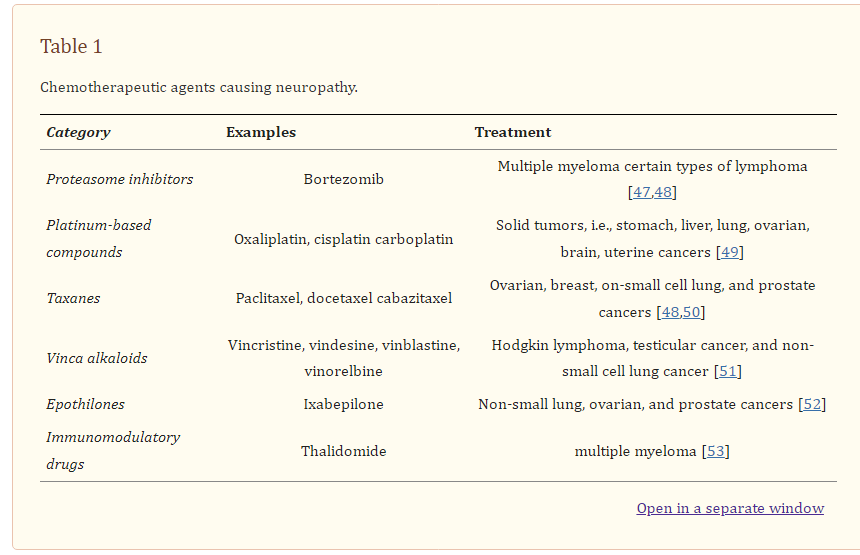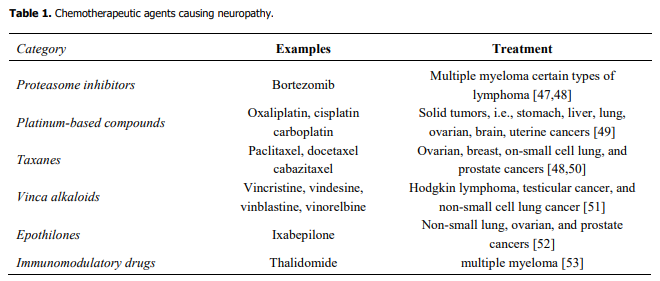I’m not particularly well published despite what some people seem to think. As a result I have Google Scholar set up to tell me if someone cites anything I’ve published. Yes, that might be a little “sad”, but I think its sort of helpful to know if anyone finds anything your write useful!
Back in 2022, I published a paper with two of my colleagues[1]. It describes the real world outcomes of some anticancer drugs. Its an OK paper. Its been cited a couple of times by people discussing real world data. But its also been cited twice by the same authors seemingly incorrectly. The first citation somehow slipped past me. However, the second by[2] caught my attention.
The paper is titled “Biological Mediators and Partial Regulatory Mechanisms on Neuropathic Pain Associated With Chemotherapeutic Agents” published in a Journal called Physiological Research. That may not seem too strange to reference our paper; after-all our paper is about chemotherapy. However, our paper doesn’t discuss neuropathic pain at all. So I hunted out a copy of the paper and tried to read it and understand what it was discussing and why they felt our paper helped their story. I confess, I managed about three lines before finding our paper in the references and locating where we were cited.
It turned out the only place there was a citation was in this table:
 We are reference 48. Our paper doesn’t mention cabazitaxel or docetaxel at all, nor does it address Ovarian, breast lung or prostate cancer. It does discuss paclitaxel, in a very specific formulation, but like I say, we didn’t mention anything to do with neuropathy in our paper.
We are reference 48. Our paper doesn’t mention cabazitaxel or docetaxel at all, nor does it address Ovarian, breast lung or prostate cancer. It does discuss paclitaxel, in a very specific formulation, but like I say, we didn’t mention anything to do with neuropathy in our paper.
I tend to think the best of people, and I wondered if something had very innocently gone wrong in the referencing process. Perhaps a wrong digit in a DOI, or clicking the wrong paper in a reference manager.
While pondering quite what might have happened, I discovered the other paper[3]. Same four authors. This paper is also about chemotherapy induced neuropathy. Published a year earlier. Although when you start to forensically analyse the submissions it was submitted on 5th July last year and accepted for publication 21st July. The[2] paper was submitted on 15th June 2023 and accepted on the 13th September 2023. For those who maybe aren’t familiar with publishing - when you submit you are specifically asked if the paper is being considered elsewhere.
Of course I rushed off and read[3] (well the first 3 lines!) and searched for our citation. Low and behold, the reference was on a table. We were even reference 48 again!

By now, I was starting to be suspicious that this was not an accidental referencing error. Two almost identical articles, with identical tables, submitted in parallel. I decided to write to the editors of both Journals. The editor of Physiological Research replied relatively quickly. He was unaware of the duplicate publication and obviously defended that his reviewers couldn’t check every citation (I hadn’t expected they could!). He promised to contact the authors for explanation.
Interestingly, the authors responded relatively quickly to the editor. It was a single paragraph response, but it was a response. It seems that we were cited to prove that paclitaxel was actually used as chemotherapy.
Reference 48 mentioned that paclitaxel and other categories of agents have been generally used for anti-cancer therapy and thus for this purpose it was cited in the table 1 of our review paper.
As for dual publication, well it seems they don’t think that applies to review articles.
Both papers are review article, but not original research paper.
And that’s where Physiological Research have decided to leave matters. The “Cancer Therapy & Oncology International Journal” have not responded at all.
I posted by thoughts to twitter and one of the guru’s there who spots papermills chipped in to discuss things. I wasn’t 100% sure I could label this as a papermill for picking a dubious reference and plagiarising their own text. However, he looked at the first sentence of both papers:
Cancer is a leading cause of mortality worldwide[@finnerup2021].
Now if you were going to write that sentence, you’d probably reference it to something like the World Health Organisation. Instead Liu et al referenced Finnerup et al - a paper titled “Neuropathic Pain: From Mechanisms to Treatment”. In case it is a surprise for readers, that paper doesn’t even mention cancer mortality!
— Content on this website has been produced with reasonable care. However, errors can occur. Opinions change over time. Code that worked at the time of publication may no longer work. Users of all content from this site do so at their own risk.
References
Reuse
Copyright
Citation
@misc{polwart2024,
author = {Polwart, Calum},
title = {Strange Citations?},
date = {2024-08-22},
url = {https://www.chemo.org.uk/posts/StrangeCitations.html},
langid = {en}
}